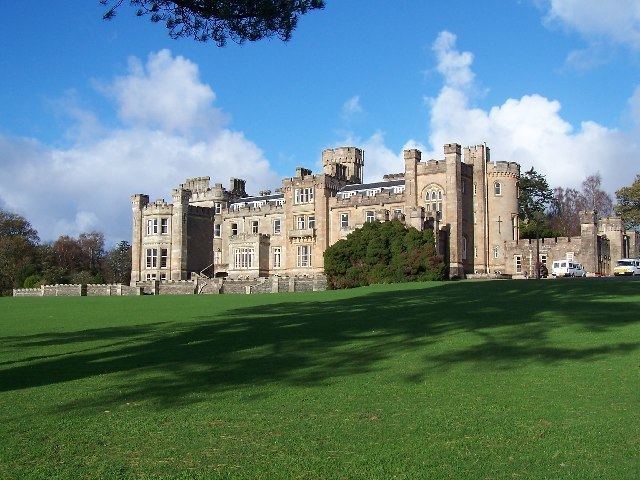Name Francis Deas | ||
 | ||
Francis William Deas (1862 –13 November 1951) was an important Scottish Arts and Crafts architect and landscape designer in the late 19th century and first half of the 20th century. He was a keen amateur painter, largely of landscapes. His most important work was probably the restoration of Castle Toward.
Contents
Life
He was born in Haslar in Hampshire. He was the son of Sir David Deas, a naval surgeon, and Margaret Hepburn. His grandfather was Francis Deas, provost of Falkland in Fife.
When his father died in 1876 his father’s brother, Sir George Deas took over the role of organising his education and sent him first to Charterhouse School then to Edinburgh University. From that point onward he remained in Scotland.
In 1890 he was articled to Robert Rowand Anderson and also began attending the new Edinburgh College of Art under Prof Frank Worthington Simon where he studied for three years.
From 1896-97 he made a study trip undertaking many measured drawings. This was partly in the companionship of Robert Lorimer (who was a lifelong friend), who apparently swayed him from his original intention of being an interior designer to instead be an architect. He returned to Edinburgh late in 1897 and set up an office at 63 Frederick Street which he shared with Victor Daniel Horsburgh (but not as partners). In 1902 he set up in a grander office at 15 Rutland Square, leased from Robert Rowand Anderson (now the headquarters of the RIAS).
Deas never married, and may be safely assumed to have been homosexual. He built an impressive home for himself in Aberdour which he called The Murrel in 1908. This has a strong Arts and Crafts flavour and its garden is allegedly late out by Gertrude Jekyll. Sadly he had invested in property in both Austria and Turkey and lost these due to World War I. Due to the financial pressures this caused he was forced to sell The Murrel in 1915. Thereafter he resided at a villa on Greenhill Gardens in Edinburgh.
His finances improved with a major commission in 1921 to restore Toward Castle which provided six years of work. At the conclusion of this he went into semi-retirement and worked with Christopher Hussey on studying the work of Robert Lorimer. This culminated, in part, in a paper submitted to the RIBA being published in the RIBA Journal in February 1931 on the life and work of Lorimer.
He retired completely in 1937. Having never married, when he died in 1951 he left his valuable collection of art and Chinese pottery to the Royal Scottish Museum.
He is buried with his father in Warriston Cemetery near the sealed east gate.
